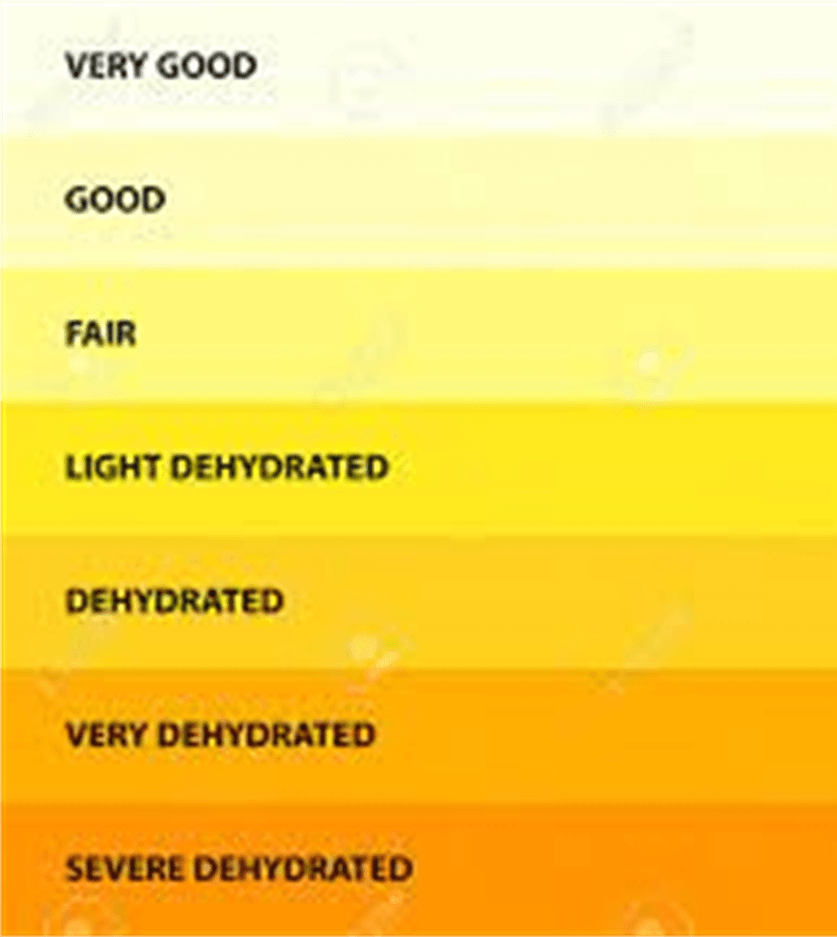How can you raise your body temperature?
Behavioral changes - putting on a coat/blanket, finding heat/fire
Physiological changes - vasoconstriction of arteries/veins to decrease blood flow to the skin, shivering
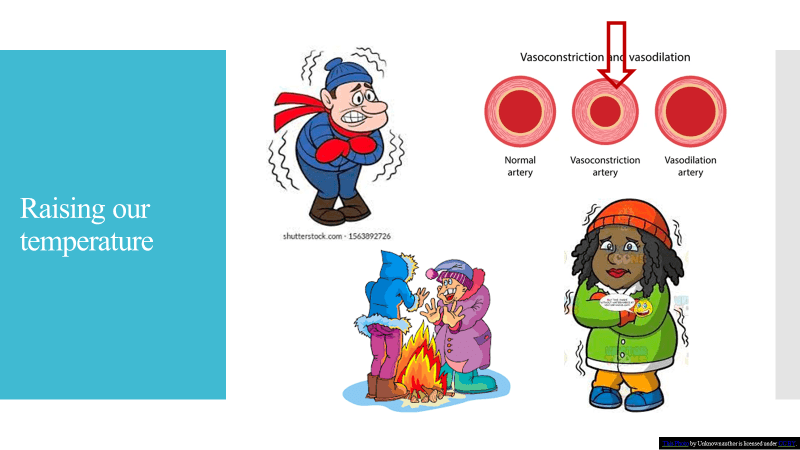
How to treat heat cramps.
Heat cramps are cramps in your legs due to dehydration and loss of electrolytes from sweating.
They can be treated by getting to a cooler place, drinking water, and consuming electrolytes (eating salt, drinking gatorade, drinking liquid IV or pedialyte).
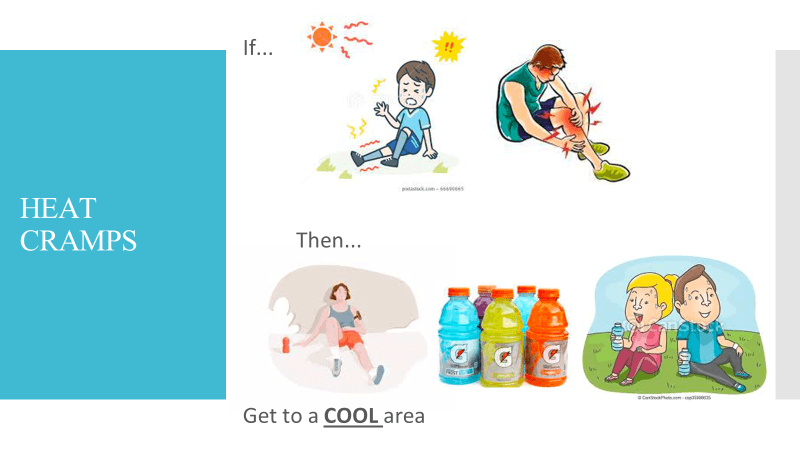
What is dehydration?
When your body loses more water than it takes in.
For Example:
Think of your body as a car, and water as the gas it needs to run. Just like driving how driving your car uses gas in your gas tank, doing your daily activities causes your water stores to run low.
Without the fuel it needs to run, your body won’t work as good without enough water- or being hydrated.
How can you lower your body temperature?
behavioral - finding shade/wearing a hat, increasing airflow (a breeze outside, a fan), wearing light colored & loose fitting clothes, finding AC, drinking water
physiologic - vasodilation of arteries to increase blood flow to the skin, sweating
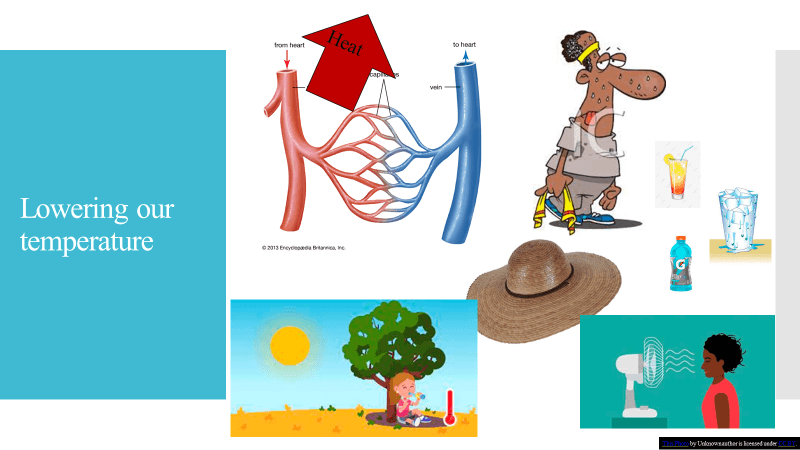
How to treat heat rash.
Heat rash is caused blocked sweat glands, trapping sweat beneath the skin, leading to inflammation and irritation.
It can be treated by moving to a cool area, apply a cold/wet towel or towel wrapped ice pack, avoid itching the skin.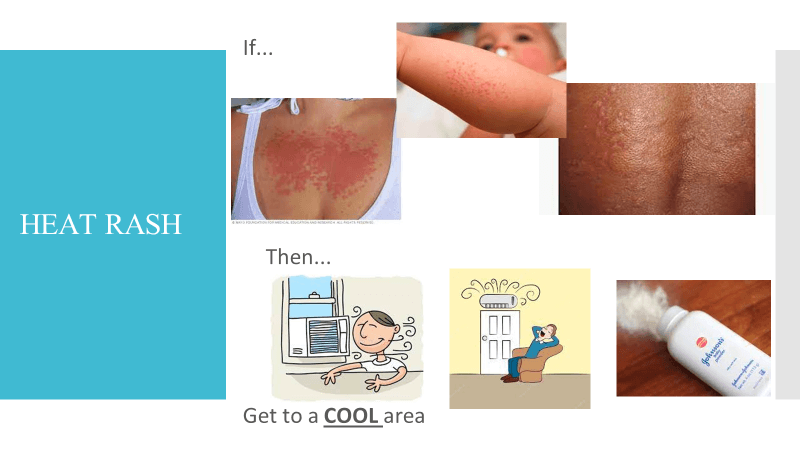
What are symptoms of dehydration?
Thirst, dry mouth, rapid heartbeat, headache, dry skin, decreased urination.
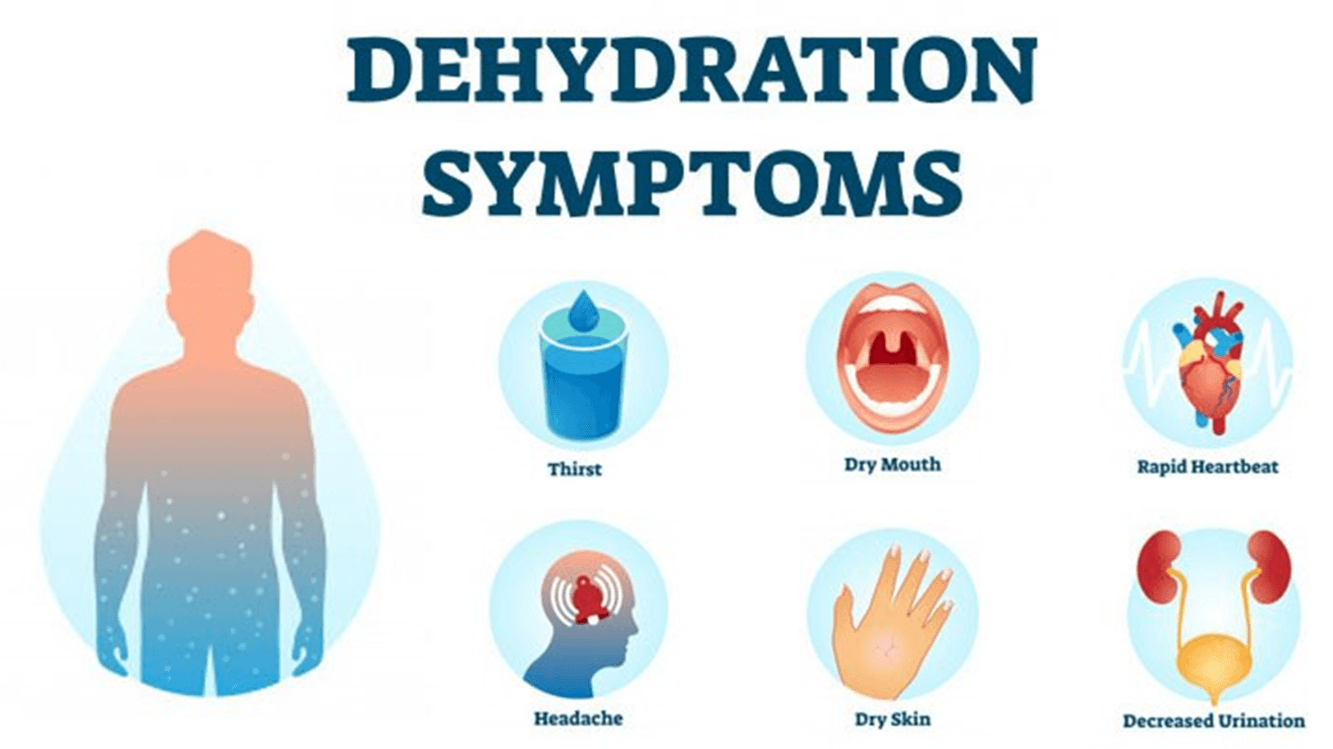
What is Homeostasis?
Regulation of body temperature by blood vessel dilation/constriction and metabolism.
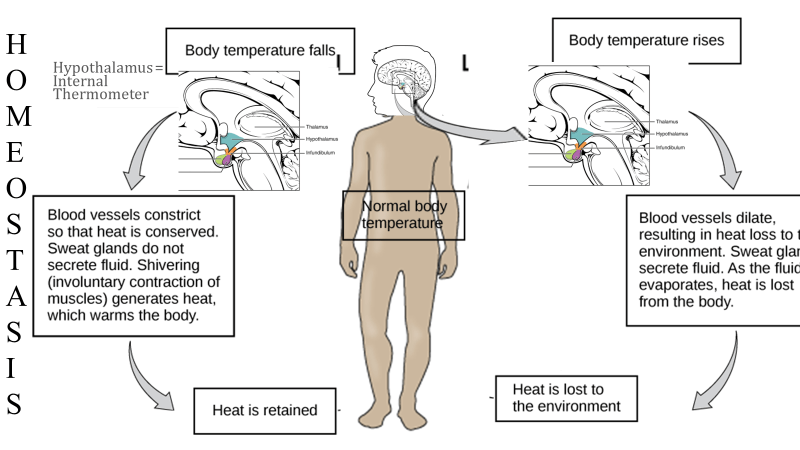
What is heat exhaustion.
Heat exhaustion is the body's result to excessive loss of water and salt, usually due to sweating.
Symptoms of Heat Exhaustion include: 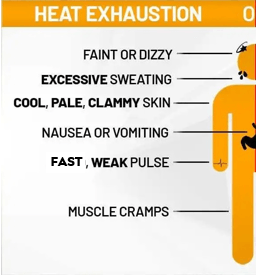
Treatment of Heat Exhaustion: get to a cooler place, drink LOTS of water, take a cool shower or use a cold towel or compress.
Best ways to stay hydrated.
Drinking at least 8 cups of water a day, drink gatorade, wear hats and long sleeves in the sun to prevent sweating, eat fresh fruits or vegetables that have a high water content (watermelon, cucumber, tomatoes).
What is Heat Stroke.
Heat Stroke occurs when the body can no longer control its temperature: the body's temperature rises rapidly and there's no more sweating. When heat stroke occurs, the body temperature can rise to 106°F or higher within 10 to 15 minutes.
Symptoms of Heat Stroke Include:
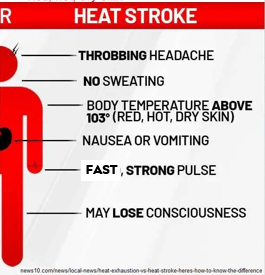
If you think you or someone you know is experiencing heat stroke - call 9-1-1!
Key Points: NO SWEATING
Best way to test your hydration levels.
Checking the color of your pee!
Here is a chart that gives you an idea of different urine colors and what they mean. If your urine is light yellow or clear, that means you are hydrated, or have enough water.
If your urine is dark orange or yellow, that means you are most likely dehydrated and have not been getting enough water.
